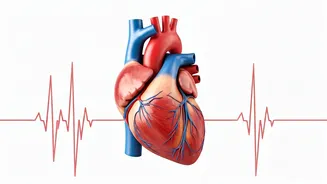Brisk Walking Benefits
Brisk walking is a time-tested exercise that offers incredible advantages for your heart. When you walk at a pace that slightly increases your breathing
and heart rate, you’re engaging in cardiovascular exercise. Regular brisk walking helps to lower blood pressure, reduce bad cholesterol (LDL), and boost good cholesterol (HDL). The convenience of walking makes it an accessible option; you can do it anywhere, anytime, without any special equipment. Aim for at least 30 minutes of brisk walking most days of the week to see significant improvements in your heart health. Start slowly, gradually increasing your pace and duration as you become more comfortable. Remember to maintain a good posture while walking and stay hydrated for maximum benefits. Brisk walking is an excellent way to improve your heart's health, manage weight, and boost your energy levels.
Yoga's Gentle Power
Yoga, often perceived as a relaxing activity, is also an incredibly effective heart-healthy exercise. Certain yoga poses and practices help improve cardiovascular health by reducing stress and improving circulation. The deep breathing exercises involved in yoga lower blood pressure and slow the heart rate, offering a calming effect that benefits the heart. Regular yoga practice can also enhance flexibility, build strength, and increase your overall sense of well-being. Numerous yoga styles cater to different fitness levels, making it easy to find a class or routine that suits your needs. Consider incorporating yoga into your routine to boost both your physical and mental health.
Dancing's Lively Benefits
Dancing is a fun and engaging way to improve your heart health. It serves as an excellent cardio workout that elevates your heart rate and improves circulation. Whether it's salsa, Bollywood, or any style you enjoy, dancing gets your body moving and your heart pumping. Regular dancing can lower your risk of heart disease, improve cholesterol levels, and help manage weight. Furthermore, dancing is a great mood booster, releasing endorphins that contribute to feelings of happiness and well-being. It is a fantastic option for those who want to make exercise enjoyable.
Cycling for Heart Health
Cycling, whether indoors or outdoors, is a low-impact exercise that is very friendly to your heart. Cycling strengthens your cardiovascular system by increasing your heart rate and improving blood flow. Regular cycling helps to control blood pressure, reduce the risk of heart disease, and tone leg muscles. Cycling is a flexible exercise; you can enjoy it at your own pace and find options suitable for all fitness levels. Consider adding cycling to your fitness routine for improved heart health and overall fitness.
Swimming's Water Workout
Swimming and water aerobics are excellent low-impact exercises that support heart health. They offer a full-body workout that increases heart rate and improves circulation without putting much stress on your joints. These water-based activities are particularly beneficial for people with arthritis or other conditions that make high-impact exercises difficult. Swimming and water aerobics help improve cardiovascular health, build strength, and increase endurance, making it a great option for people of all ages.
Exercise Consistency Keys
Staying consistent with any exercise routine is key to achieving optimal results. This means establishing a regular schedule and sticking to it as much as possible, regardless of the challenges. Consistency helps your body adapt to exercise, making it easier to improve your heart health. Set realistic goals, find an exercise buddy for motivation, and mix up your workouts to keep them interesting. Remember that any form of exercise is better than none, so even small bouts of physical activity can benefit your heart.
Best Exercise Times
Finding the best time to exercise is essential for maximizing benefits. Morning workouts can energize your day and set a healthy tone. Evening workouts can help you de-stress after a long day. The ideal time depends on your personal preferences, schedule, and energy levels. The important thing is to find a time that you can commit to regularly. Listening to your body and adjusting your workout schedule as needed is also important to maintain consistency.











